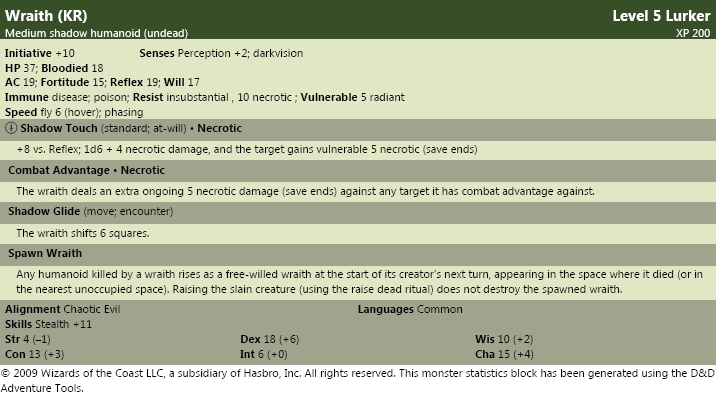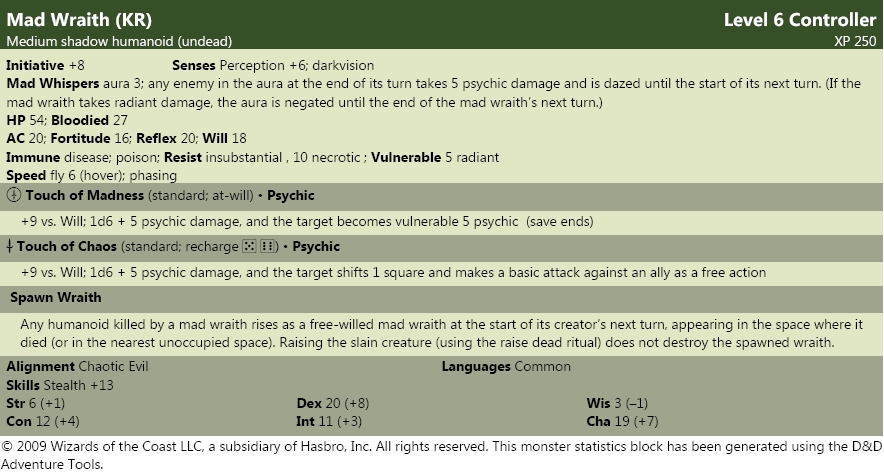keterys
First Post
Wraiths and Mad Wraiths are horrible in all kinds of different and stupid ways, yes. Absolutely. Worse, they amplify each others' horribleness. It's shocking to me that they made it past the design board in that state.
It's not quite as bad as x4 hp with regen 20 (on account of weaken having a chance to miss and its base hp being reduced for being insubstantial in the first place), but... yeah, horrible, horrible.
Well, to give an example of what I'm looking at, here's a version of the Wraith that I hope is still scary, but not in an annoying-I-hate-this-game kind of way.

Its damage potential is notable, especially if it can get combat advantage, though resistance to necrotic is still a severe detriment to it. Enough so the Spawn Wraith might be a serious trigger. The CA damage being ongoing helps prevent multiple wraiths from stacking too effectively, and giving people room to sweat and grant saves. No regeneration, no weaken. Its defenses were too low for its level (like, Fort was Lvl+7), so it did gain some there though as I swept through.
I'd probably tweak it a little more, just cause it's a bit too scary when used on level 1s at the moment probably. But, eh, you get the gist of it.
It's not quite as bad as x4 hp with regen 20 (on account of weaken having a chance to miss and its base hp being reduced for being insubstantial in the first place), but... yeah, horrible, horrible.
Well, to give an example of what I'm looking at, here's a version of the Wraith that I hope is still scary, but not in an annoying-I-hate-this-game kind of way.

Its damage potential is notable, especially if it can get combat advantage, though resistance to necrotic is still a severe detriment to it. Enough so the Spawn Wraith might be a serious trigger. The CA damage being ongoing helps prevent multiple wraiths from stacking too effectively, and giving people room to sweat and grant saves. No regeneration, no weaken. Its defenses were too low for its level (like, Fort was Lvl+7), so it did gain some there though as I swept through.
I'd probably tweak it a little more, just cause it's a bit too scary when used on level 1s at the moment probably. But, eh, you get the gist of it.

